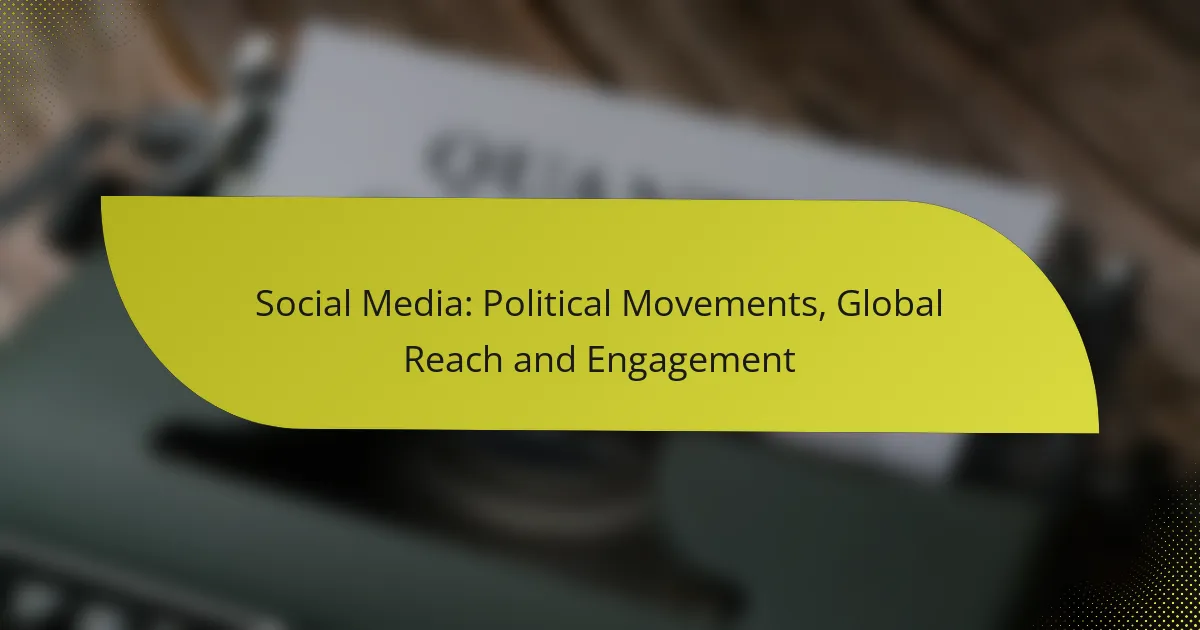Social media has become a crucial tool for political movements, enabling them to amplify their messages and connect with a global audience. By leveraging platforms like Facebook, Twitter, and Instagram, these movements can create engaging content that fosters community and mobilizes action, ultimately influencing voter turnout and political engagement. Through targeted messaging and direct communication, social media empowers activists to rally support and drive change effectively.
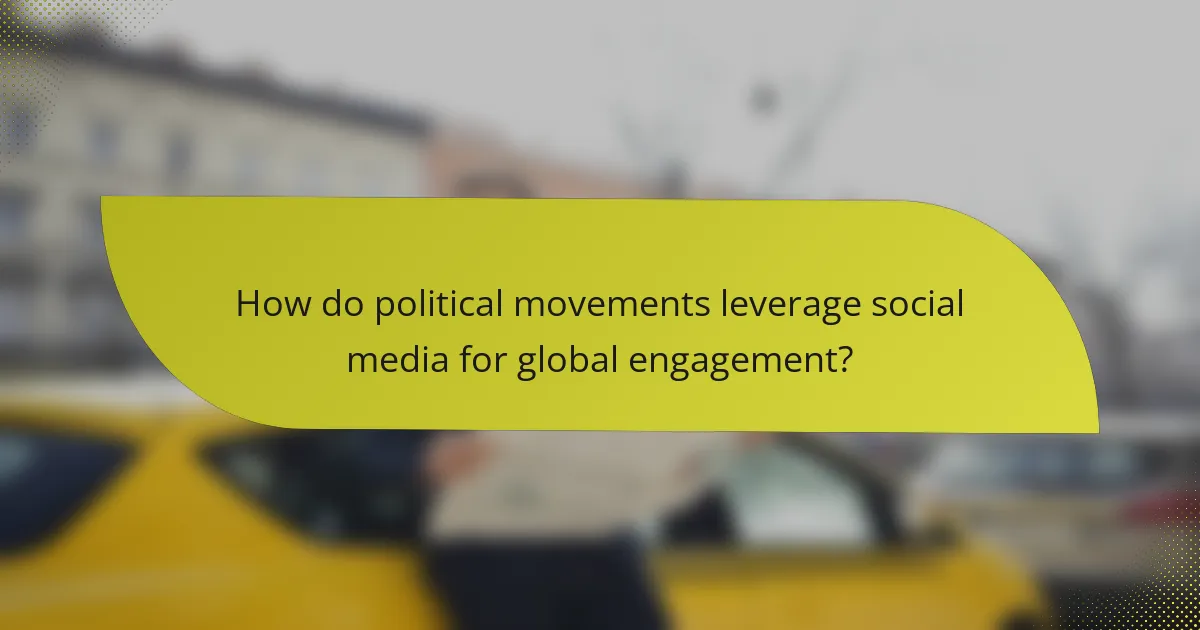
How do political movements leverage social media for global engagement?
Political movements utilize social media to amplify their messages, connect with supporters worldwide, and mobilize action. By creating shareable content and engaging narratives, these movements can reach diverse audiences, fostering a sense of community and urgency around their causes.
Case studies of successful movements
One prominent example is the Arab Spring, where social media platforms like Facebook and Twitter played crucial roles in organizing protests and disseminating information. Activists used these channels to share real-time updates, which helped to galvanize support both locally and internationally.
Another significant case is the Black Lives Matter movement, which gained momentum through viral hashtags and powerful imagery shared across social media. The movement’s ability to engage a global audience has led to widespread discussions on racial justice and police reform.
Impact on global awareness
Social media has transformed how political movements raise global awareness about their issues. By sharing personal stories and impactful visuals, movements can humanize complex topics, making them relatable to a broader audience. This accessibility often leads to increased empathy and support from people who may not have been previously engaged.
Moreover, the rapid spread of information through social media can lead to immediate international responses, such as protests or policy changes. Movements can leverage trending topics to keep their issues in the public eye, ensuring sustained attention and advocacy.
Role of hashtags in mobilization
Hashtags serve as powerful tools for mobilization, allowing movements to categorize their messages and connect with like-minded individuals. By using specific hashtags, activists can create a unified front, making it easier for supporters to find and share relevant content.
For instance, hashtags like #MeToo and #ClimateStrike have not only facilitated discussions but have also organized events and campaigns worldwide. Effective hashtag strategies can enhance visibility and engagement, but it is essential to ensure they resonate with the target audience to maximize impact.
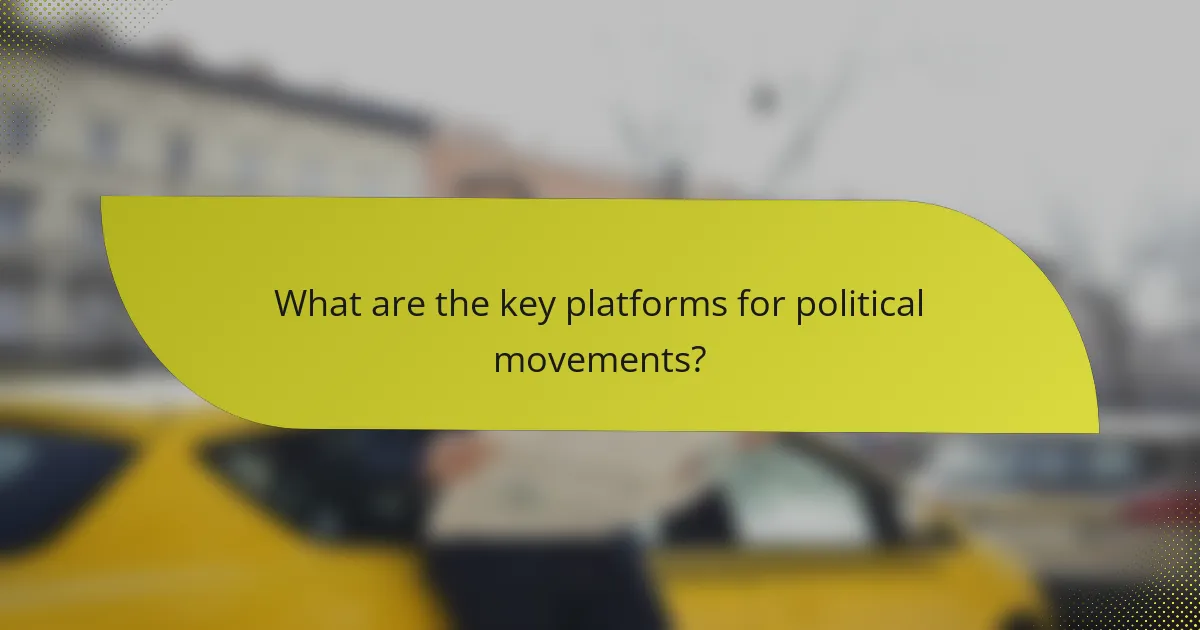
What are the key platforms for political movements?
Key platforms for political movements include Facebook, Twitter, and Instagram, each serving unique purposes in mobilizing support and spreading messages. These social media channels facilitate organization, communication, and visual engagement, making them essential tools for activists and political groups.
Facebook’s role in organizing
Facebook is a powerful tool for organizing political movements due to its extensive user base and group functionalities. Activists can create event pages, join groups, and share information rapidly, allowing for effective mobilization of supporters. For instance, grassroots campaigns often use Facebook to coordinate rallies and distribute information about political issues.
However, it’s crucial to manage privacy settings and be aware of misinformation. Organizers should encourage members to verify information before sharing to maintain credibility and trust within the community.
Twitter’s influence on real-time communication
Twitter excels in real-time communication, making it ideal for sharing updates and engaging in dialogue during political events. The platform’s character limit encourages concise messaging, which can quickly go viral, amplifying a movement’s reach. Hashtags play a significant role in organizing conversations and making content discoverable.
To maximize impact, users should engage with trending topics and participate in discussions. However, it’s important to remain respectful and avoid inflammatory language, as this can detract from the movement’s goals and alienate potential supporters.
Instagram’s visual storytelling
Instagram’s focus on visual content allows political movements to tell compelling stories through images and videos. This platform is particularly effective for capturing the emotional aspects of activism, helping to humanize issues and attract attention from a broader audience. For example, powerful imagery from protests can resonate deeply and encourage sharing.
To leverage Instagram effectively, movements should maintain a consistent aesthetic and use relevant hashtags to increase visibility. Engaging with followers through stories and direct messages can also foster a sense of community and encourage participation in campaigns.
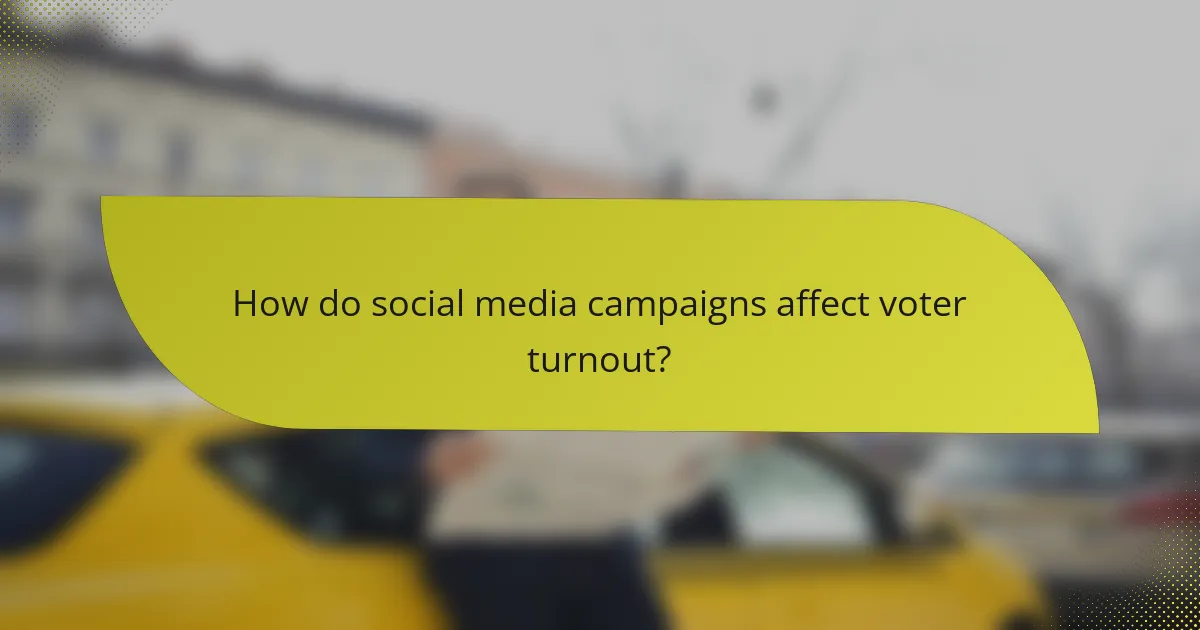
How do social media campaigns affect voter turnout?
Social media campaigns significantly influence voter turnout by increasing awareness and engagement among potential voters. These platforms facilitate direct communication, mobilizing individuals to participate in elections through targeted messaging and community-building efforts.
Statistics on engagement and turnout
Research indicates that social media can boost voter turnout by several percentage points, particularly among younger demographics. In some cases, platforms like Facebook and Twitter have been linked to increases in turnout ranging from 5% to 15% during major elections.
Engagement metrics, such as likes, shares, and comments, often correlate with higher voter participation. For instance, campaigns that generate substantial online interaction tend to see a more mobilized voter base, emphasizing the importance of effective social media strategies.
Examples from recent elections
In the 2020 U.S. presidential election, social media played a crucial role in voter mobilization efforts. Campaigns utilized targeted ads and influencer partnerships to reach specific voter groups, resulting in record turnout levels.
Similarly, the 2021 German federal election showcased how social media campaigns could engage younger voters. Political parties leveraged platforms like Instagram and TikTok to connect with this demographic, leading to increased participation compared to previous elections.
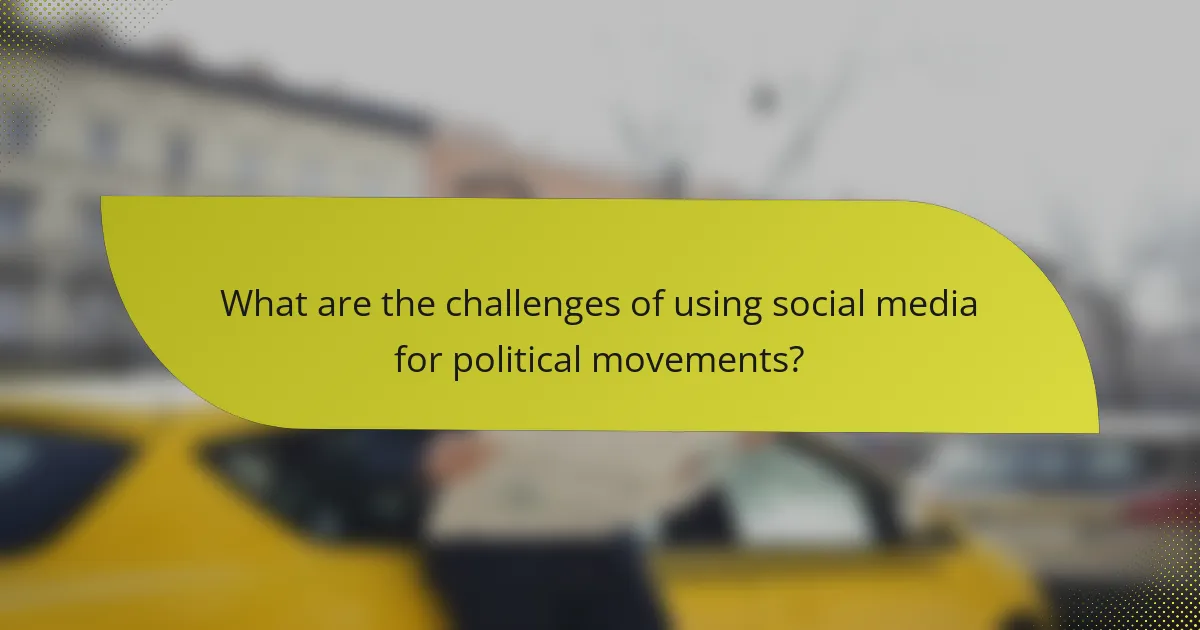
What are the challenges of using social media for political movements?
Political movements face significant challenges when utilizing social media, primarily due to misinformation and regulatory hurdles. These obstacles can hinder effective communication, mislead supporters, and complicate the legal landscape across different countries.
Issues of misinformation
Misinformation can spread rapidly on social media, undermining political movements by distorting facts and creating confusion. For instance, false narratives can lead to public distrust, affecting campaign credibility and engagement.
To combat misinformation, movements should prioritize fact-checking and source verification. Engaging with reputable organizations that specialize in debunking false claims can help maintain integrity and trust among supporters.
Regulatory hurdles in different countries
Different countries impose varying regulations on social media use, which can create obstacles for political movements. For example, some nations may have strict laws governing online speech, while others might require political advertisements to be disclosed transparently.
Movements must familiarize themselves with local regulations to avoid legal repercussions. Consulting legal experts or local advocacy groups can provide guidance on compliance and best practices for navigating the complex landscape of social media regulations.
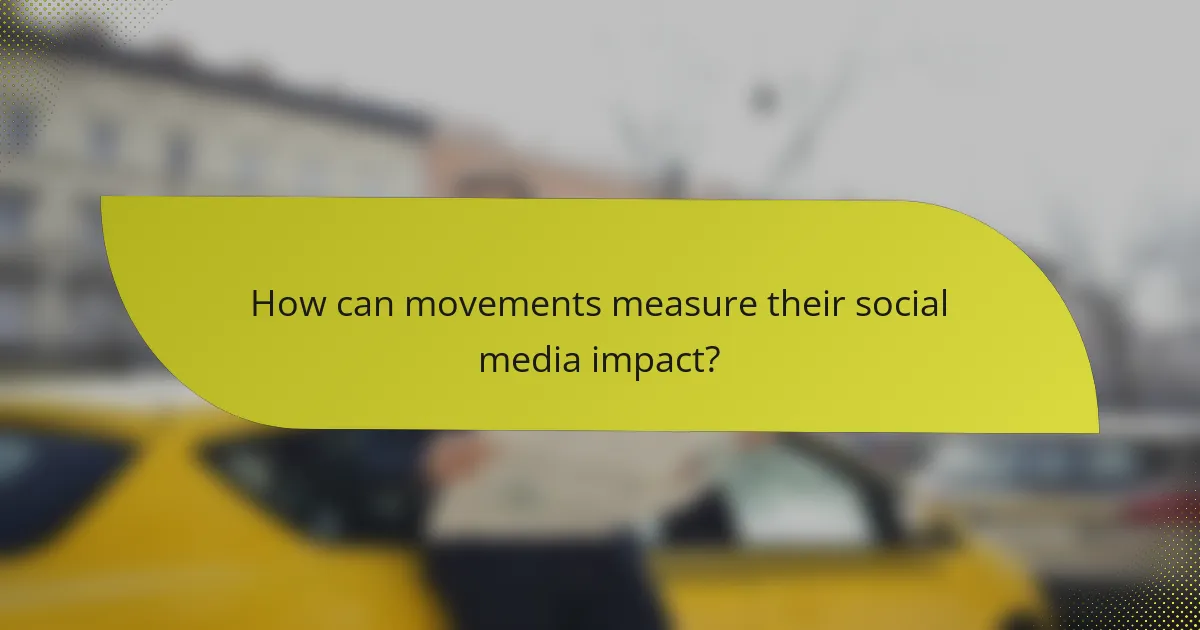
How can movements measure their social media impact?
Movements can measure their social media impact by analyzing engagement metrics, audience reach, and overall sentiment. These indicators help assess how effectively a movement communicates its message and mobilizes support.
Metrics for engagement analysis
Key metrics for engagement analysis include likes, shares, comments, and follower growth. These figures provide insight into how well content resonates with the audience. For example, a post with high shares indicates that the message is being amplified beyond the original audience.
Another important metric is engagement rate, calculated as the total interactions divided by the total followers or impressions. A higher engagement rate suggests a more active and invested audience, which is crucial for the success of political movements.
Tools for tracking social media performance
Several tools can help track social media performance, including Hootsuite, Sprout Social, and Google Analytics. These platforms offer analytics dashboards that provide real-time data on engagement metrics and audience demographics.
When selecting a tool, consider factors such as ease of use, integration with existing platforms, and the specific metrics you want to track. Many tools offer free trials, allowing movements to test functionality before committing to a subscription.
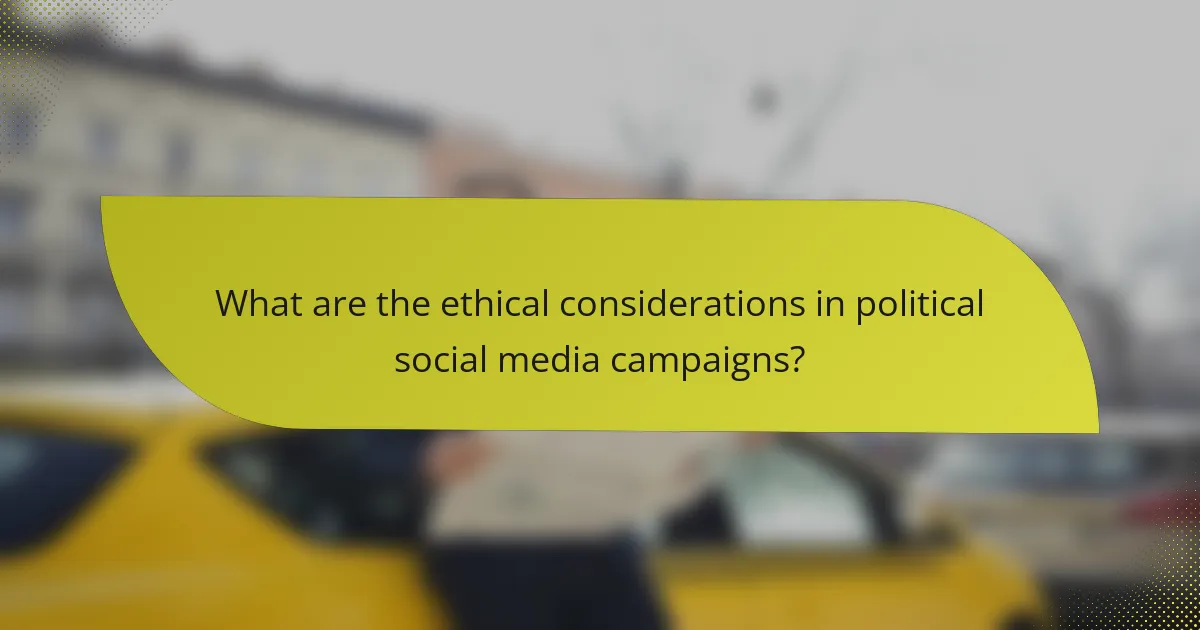
What are the ethical considerations in political social media campaigns?
Ethical considerations in political social media campaigns include user privacy, transparency in funding sources, and the potential for misinformation. Campaigns must navigate these issues to maintain trust and comply with regulations while effectively engaging voters.
Privacy concerns for users
Privacy is a significant concern in political social media campaigns, as personal data can be collected and used without user consent. Campaigns should prioritize user privacy by being transparent about data collection practices and ensuring compliance with regulations like the General Data Protection Regulation (GDPR) in Europe.
To protect user privacy, campaigns can implement measures such as anonymizing data and allowing users to opt-out of data sharing. Avoiding invasive tracking methods can also help maintain user trust and engagement.
Transparency in funding
Transparency in funding is crucial for political social media campaigns to ensure accountability and build public trust. Campaigns should disclose their funding sources and provide clear information about how funds are being used, especially when it comes to advertising and outreach efforts.
To enhance transparency, campaigns can publish regular financial reports and utilize platforms that allow for public scrutiny of their funding. This practice not only complies with regulations but also fosters a sense of integrity among voters.
